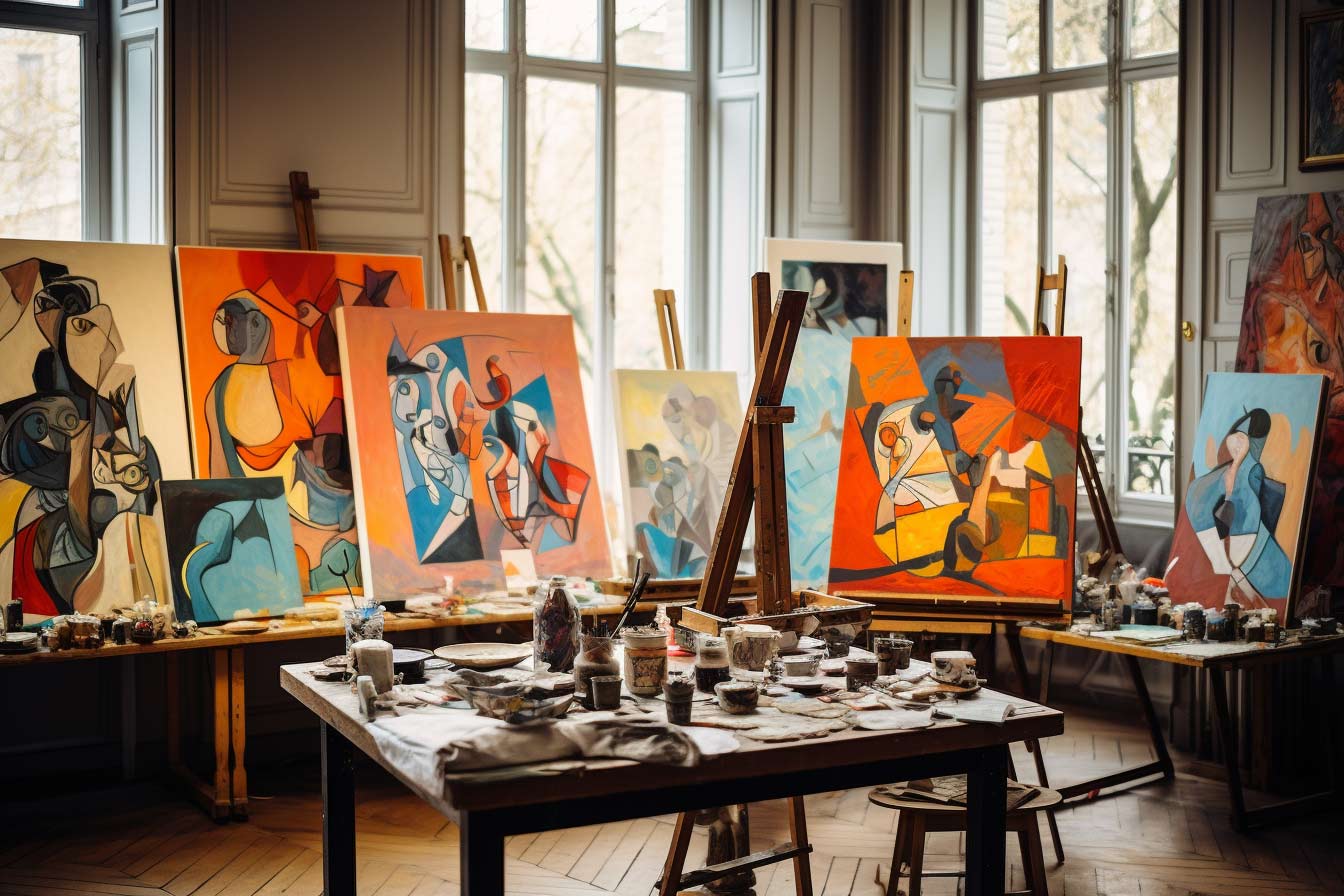The Luminary of Cubist Movement
Juan Gris, born José Victoriano Carmelo Carlos González-Pérez on March 23, 1887, in Madrid, commenced his life’s journey amongst the bustling streets and ornate cathedrals of Spain’s historic capital. As a tender bud preparing to bloom, Gris displayed a precocious affinity for the arts. Madrid, with its heady mix of tradition and progress, moulded young Juan’s aesthetic sensibilities.
During his formative years, Gris had been swayed by the shadows and nuances of engineering, before the call of the arts grew too intense to ignore. Leaving behind the structured world of mathematics, he turned his focus toward painting, drawing from the rich tapestry of Madrid’s heritage. The very air seemed thick with artistic ambition and potential.
By 1906, the allure of Paris beckoned. Like many ambitious souls of his time, Gris was drawn to the City of Lights, where art and innovation conspired to shape the modern world. Paris was the crucible of the avant-garde, and Gris, with his keen sense of aesthetics, plunged headlong into its whirlpool.
In the bosom of Paris, he found himself amidst legends. Names like Picasso and Braque were not mere contemporaries; they were co-travellers on the journey of exploration. It was here that Gris became enamoured with the budding language of Cubism, which sought not merely to represent reality but to dissect and reinterpret it.
Gris’s approach to Cubism was unique, grounded in his intellectual rigour and disciplined by his early forays into engineering. His works, while sharing the abstracted forms of his peers, held a crystalline clarity and a harmony of colour that set him apart. His palette, often cool and harmonious, added a lyrical quality to the fragmented world of Cubism.
Tragically, the flames of genius that burn too brightly often have the shortest lives. Gris’s life, filled with fervent creation, was cut short. On May 11, 1927, at the age of forty, the world bid adieu to this luminary of the Cubist movement.
Of his illustrious career, several masterpieces stand out, resonating with both critics and art enthusiasts alike. Here are ten of his most celebrated works:
- Portrait of Picasso (1912) – A homage to his friend and fellow artist, capturing the essence of Picasso through geometric abstraction.
- The Sunblind (1914) – A playful yet profound exploration of light and shadow, using bold colours and fragmented forms.
- Still Life with Checked Tablecloth (1915) – An intricate composition where objects and space intertwine, showcasing Gris’s analytical prowess.
- Harlequin with Guitar (1919) – A rhythmic composition of form and colour, evoking both motion and emotion.
- The Painter’s Window (1925) – A symphony of geometrical elements, reflecting Gris’s introspective moods.
- The Book (1915) – A profound meditation on knowledge and form, with muted colours and overlapping planes.
- Nature Morte à la Nappe à Carreaux (1915) – A still life that pulses with life, teeming with geometric forms and vibrant colours.
- The Guitar (1913) – An exploration of music through visual forms, where every shape seems to resonate with sound.
- Flowers on a Table (1914) – A harmonious composition, fusing the organic and the abstract in a delicate balance.
- Breakfast (1914) – An intimate portrayal of the everyday, transformed into a world of fragmented beauty.
Juan Gris, in his brief sojourn on this Earth, transformed the canvas of Cubism with his unique vision. Through his works, we glimpse not just the world as it is, but as it could be – refracted, reimagined, and reborn.

